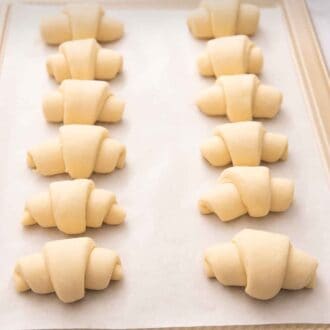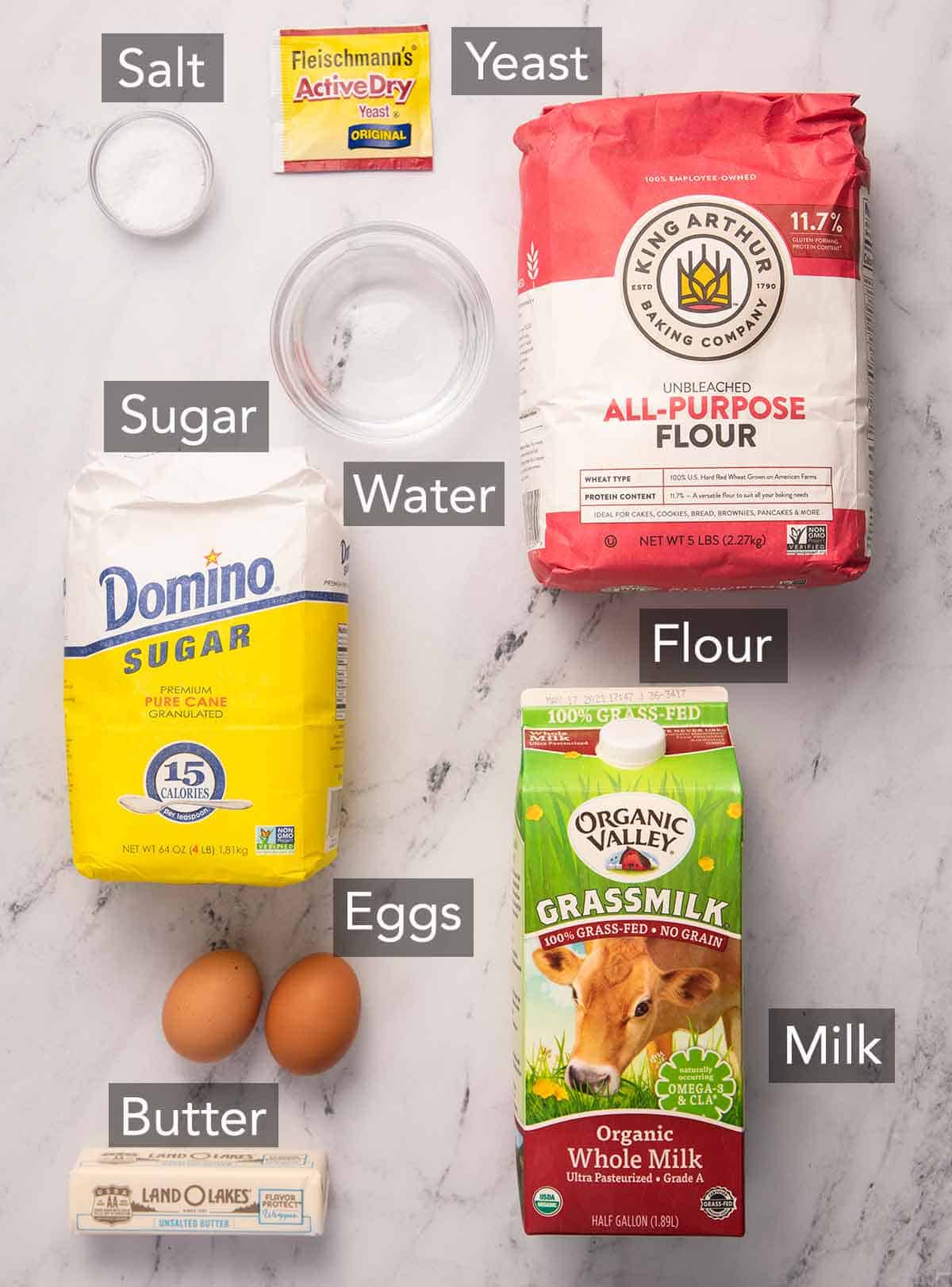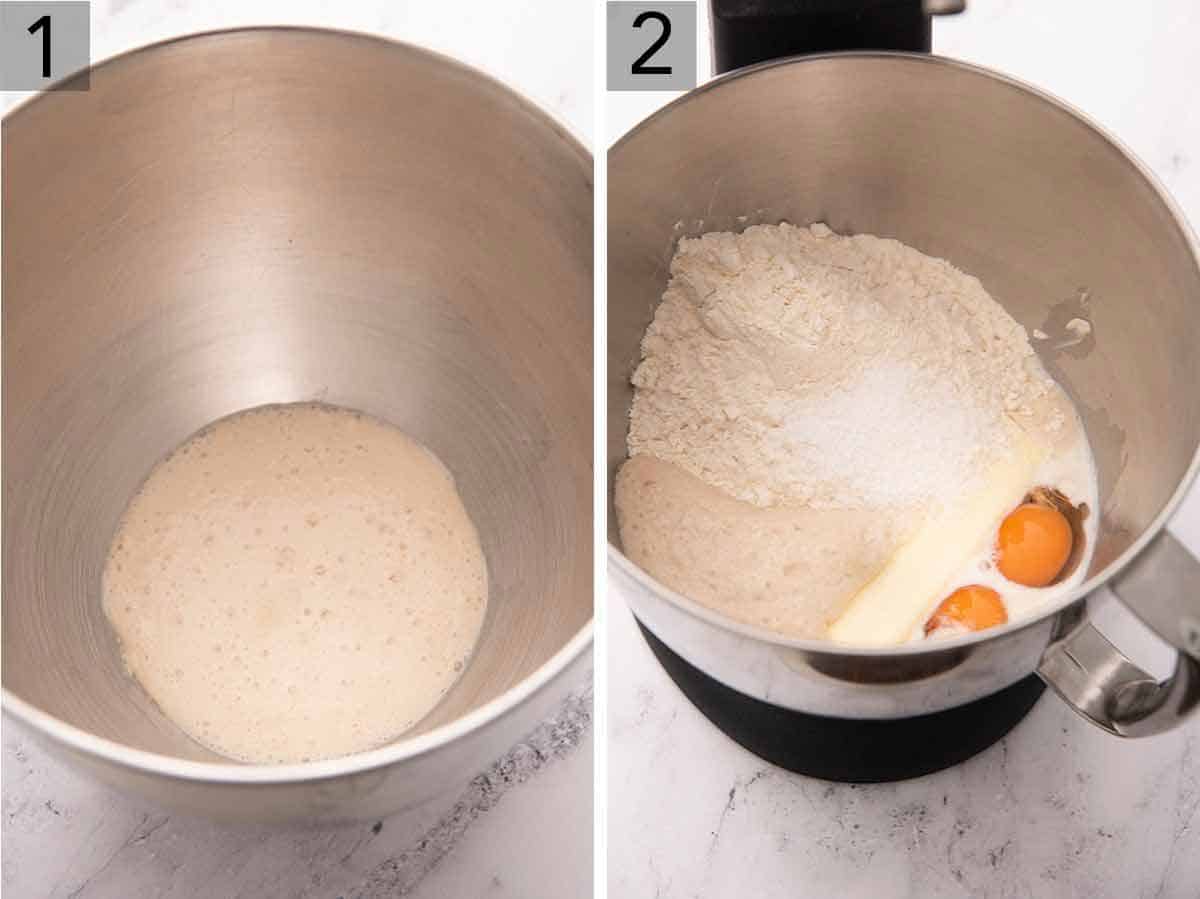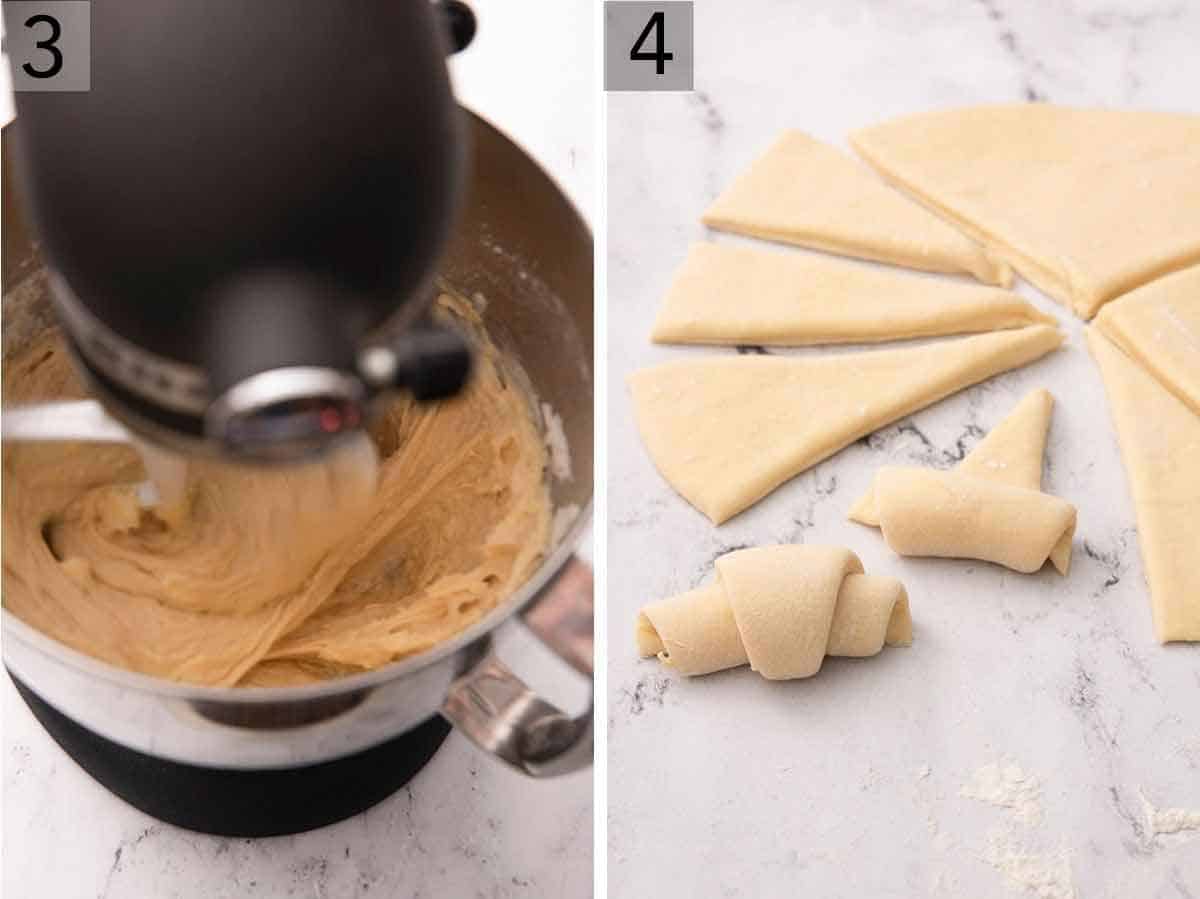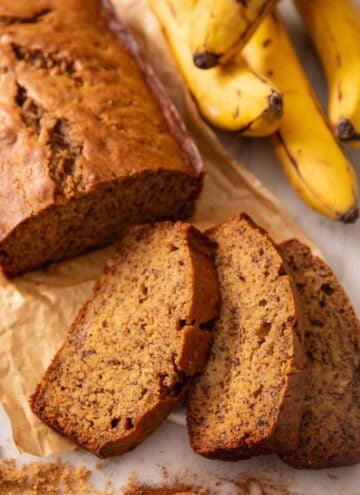Baking bread has never been easier. Follow my step-by-step instructions and tips down below, and you’ll have freshly baked rolls in no time. Want to try your hand at another bread recipe? Try my French Bread or Dinner Rolls.
WHAT YOU NEED TO MAKE THIS RECIPE
Active dry yeast — it is vital to make sure the active dry yeast has not expired or the yeast won’t work. Do not swap for instant yeast or fresh yeast. Warm water — it is very important that the water is between 110°-120°F. If the water is hotter, it will kill your yeast. If the temperature is lower, the yeast won’t activate. Milk — this is another essential ingredient for creating that soft and fluffy texture to the crescent rolls. Make sure to use whole milk because it contains more fat and will form a richer dough. Again, it should be between 110°-120°F so as not to affect the yeast. Butter — different brands of salted butter vary in salt content, so it’s best to use unsalted butter to keep things consistent. Be sure to have your butter at room temperature as you mix it into the dough directly. Room temperature butter should make a slight indent when pressed with your finger.
HOW TO MAKE CRESCENT ROLLS
Activate the yeast by combining the warm water, a teaspoon of sugar, and active dry yeast in the mixing bowl. Let it stand until foamy, about 5 minutes.
Add the sugar, whole milk, butter, eggs, 2 cups of flour, and salt to the mixing bowl. Mix until well combined.
Mix on low speed and add the remaining flour ½ cup at a time, kneading until a soft dough ball forms and starts to pull away from the sides of the bowl. Shape into a ball and let rise until doubled.
When doubled, divide the dough in half before shaping each half into a ball. Roll them into a 12-inch circle, cut the circle into 12 wedges, and roll each wedge into a crescent roll shape.
Place the crescent rolls on a prepared baking sheet and let them rise until puffed, about 30 minutes.
Bake for 10 to 12 minutes or until golden brown. Immediately brush with melted butter before serving warm.
PRO TIPS FOR MAKING THIS RECIPE
Fully preheat the oven before you put the crescent rolls inside. If the temperature is not at 400°F, you risk the rolls being underbaked or falling flat. Don’t place the dough in a place that’s too warm, like direct sunlight, or it’ll prevent the dough from rising properly. An excellent place to let your dough rise is inside the oven with only the oven light turned on. Too much flour will cause your rolls to be dense. The most accurate way to measure flour is by using a kitchen scale but if using cups, make sure you spoon the flour into the cups and level it off with a knife. Do not scoop straight from the bag or you’ll likely measure out too much flour. I recommend using a stand mixer, but you can knead this dough by hand as well. It will just take longer to do so. You can brush on garlic butter at the end instead of regular butter to change things up. Roll the dough around mini cocktail smokies before baking to transform this into pigs in a blanket. The order in which you add the ingredients to the mixing bowl is important as the salt shouldn’t come in direct contact with the yeast at the beginning as it can kill the yeast or slow down its ability to make the dough rise. I provide a range of the amount of flour needed. The dough can be sticky so you can add extra flour until the dough gets to the right smooth consistency.
FREQUENTLY ASKED QUESTIONS
Are crescent rolls and croissants the same thing?
No, the two are not the same. While both have a similar crescent shape, making croissants requires a technique of layering butter and dough while rolling and folding it several times, called laminating the dough. It is a much more labor-intensive flakey layered pastry than crescent rolls.
What makes it better than canned dough?
Did you know that Pillsbury Crescent rolls don’t contain any dairy? Our homemade version uses dairy to add flavor and sweetness, and it also makes the dough soft. This small change really kicks them up a notch!
How do I make these ahead of time?
If you’d like these rolls for breakfast, you can make them the night before, up to rolling the dough. Once rolled and placed on the sheet pan, cover it and let it rise overnight in the refrigerator. When ready to bake, bring the dough to room temperature first.
How do I store them?
Store any leftover rolls in a bag or an airtight container at room temperature. The rolls will keep at room temperature for a couple of days. To keep them longer, store them in the fridge for up to a week. If you love this recipe try these out!BeignetsCinnamon RollsCornbread RecipeBanana Bread RecipeEnglish Muffins If you’ve tried these Crescent Rolls then don’t forget to rate the recipe and let me know how you got on in the comments below, I love hearing from you!


